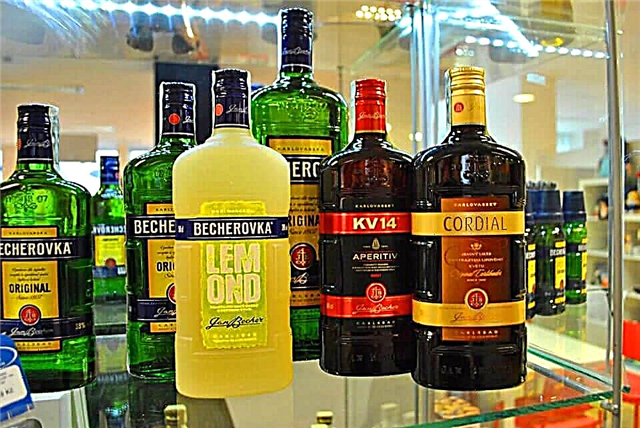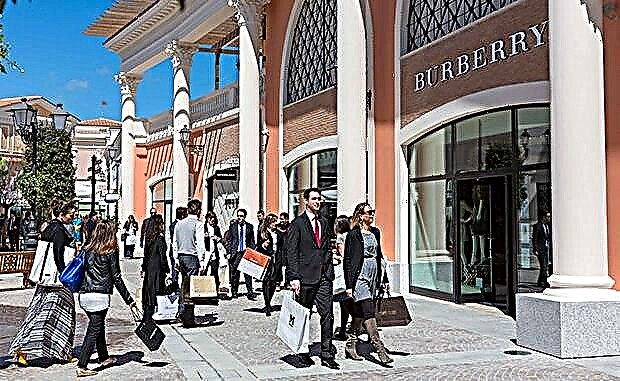Address: Russia, Moscow, Danilovsky Val street
Foundation date: XIII century
Main attractions: Church of the Holy Fathers of the Seven Ecumenical Councils, Cathedral of the Life-Giving Trinity, Church-Bell Tower of Simeon the Stylite
Coordinates: 55 ° 42'39.0 "N 37 ° 37'49.2" E
Content:
The history of the monastery began in the XIII century and was closely connected with all the events that took place in Moscow - the raids of not friends, peasant uprisings and the Time of Troubles, which was not easy for Russia. Since the mid-1980s, the Danilov Monastery has been considered the residence of the Moscow Patriarch.

Bird's-eye view of St. Danilov Monastery
The tradition of the founding of the monastery
The date of birth of the monastery is not recorded in historical documents. We know about those distant times only thanks to the preserved church traditions. According to one of them, the monastery was built in 1282 with money donated by the youngest son of Alexander Nevsky - Daniel. The prince dedicated the new monastery to his heavenly protector and beloved by Christians ascetic - Daniel the Stylite. In 1303, shortly before leaving the world, another prince became a monk and was later buried in his monastery.
The first archimandry in Muscovy was established within the walls of this monastery. The son of the Moscow prince Daniil Alexandrovich, John I Kalita, contributed a lot to the strengthening of the Moscow principality and wanted to have a strong spiritual center near his palace. Therefore, by his order, the archimandrite and monks of the Holy Danilov Monastery were transferred to the Moscow Kremlin.
With the departure of the brethren and the abbot, the monastery buildings were depopulated and left unattended. By the XIV-XV centuries on the site of the former monastery there was only a wooden church dedicated to Daniel the Stylite, and a small village.

Towers, walls and gateway church of Simeon the Stylite monastery from the parking lot
History of the monastery
The first historical records of the Holy Danilov Monastery date back to 1560. The life of the monastery was revived by the will of Tsar Ivan IV the Terrible, and a year later a new monastery church was built and consecrated on the site of the old cemetery. When, at the end of the 16th century, the troops of the Crimean Khan Kazy-Girey approached the city's borders, a mobile military camp was set up next to the monastery, where the armed defenders of Moscow were housed.
Then the hard times of Troubles came in Russia. In 1606, near the monastery, the army of the Russian Tsar Vasily Shuisky fought with the rebels led by Ivan Bolotnikov and Philip Pashkov. A year later, near the monastery, one of the impostors, who called himself Tsarevich Peter Fedorovich, was executed.
Unlike other monasteries in Moscow, the Danilov Monastery has never been particularly crowded. In the 18th century, 30 monks lived in it, and at the beginning of the 20th century - only 17 monks. Preserved information that the monastery owned 178 dessiatines of land, a stone courtyard and several Moscow mansions.

Gate Church of Simeon the Stylite
Throughout their long history, monks have always tried to help the poor and the sick. In 1805, an almshouse was opened at the monastery, in which elderly women lived. And half a century later, a shelter for elderly priests and their widows appeared here.
In 1918, with the advent of Soviet power, the monastery was officially closed. However, on the initiative of his abbot, the monastery life did not die out. For several years the monastery became a refuge for bishops and bishops who took refuge here before being arrested.
Finally, in 1929, the authorities' patience ran out, and they issued a special decree on the liquidation of the monastery. The remaining monks were driven out, and the monastery bell tower was dismantled. Fortunately, the removed bells did not have time to be melted down, and the American businessman Charles Richard Crane saved them. For many years, the old bells were kept at Harvard University, but in 2007 they were returned to their homeland.

Church of the Holy Fathers of the Seven Ecumenical Councils
In the early 1930s, the authorities began to liquidate the monastery cemetery. The ashes of the writer Nikolai Vasilyevich Gogol, the princes of Cherkassky, the poet Nikolai Mikhailovich Yazykov and the historian Dmitry Alexandrovich Valuev were transferred to the Novodevichy necropolis. And the remains from the grave of the itinerant artist Vasily Grigorievich Petrov were reburied at the cemetery of the Donskoy monastery. The rest of the burials were mercilessly demolished.
On the territory they created a reception center, subordinate to the NKVD, where they brought the children of the repressed or, as they called it, "enemies of the people." The conditions in the orphanage were terrible. Many children were often sick and the dead were buried right under the walls of the monastery. Since 1988, an Orthodox memorial chapel has stood on the site of the former monastery cemetery.
In 1983, the monastery territory was returned to the church in order to create here the residence of the Moscow Patriarchate. Money for the restoration of the ancient monastery was collected from all Moscow parishes and dioceses of the country, and the restoration work took several years.

Cathedral of the Life-Giving Trinity
Buildings and monastery attractions
The oldest surviving church, the Church of the Holy Fathers of the Seven Ecumenical Councils, appeared in the monastery in the 17th century. During the restoration of the monastery, it was thoroughly restored and re-consecrated.
The ancient temple is a complex architectural structure, the basement of which is the Church of the Intercession, built in the 60-70s of the 17th century. It is completed by two upper churches, which were erected in the first half of the 18th century.
The church in honor of Simeon the Stylite is located above the Holy Gates of the monastery. A slender bell tower rises 45 m above it.
The largest cathedral of the Life-Giving Trinity can accommodate up to 3000 believers. It was built according to the project of the famous architect Osip Bove in the 30s of the XIX century. The majestic building was erected in the traditions of the Russian Empire style and decorated with graceful Tuscan porticoes.

Overhead chapel
In the west of the monastery territory there is a two-storey building, which houses the Patriarchal and Synodal residences. On its top floor there is a small house church of All Saints.
The monastery has preserved three stone buildings of the 19th century - the monastic building, the abbot's chambers and the former hospital. On the square, in the middle of the monastery, you can see the Nadladeznaya chapel, erected in the year when believers celebrated the 1000th anniversary of the Baptism of Rus. Visitors to the monastery also come to bow to the monument of Prince Vladimir and the khachkar stone donated by the rectors of the Armenian Apostolic Church.
Current state and visiting regime
Nowadays, the monastery is active, and it is run by a governor who has the rank of archimandrite. Church services are held here on weekdays at 7.00 and 17.00, and on Saturdays and Sundays at 8.45 and 17.00. The fraternal prayer service begins at 6.00.

Memorial chapel at the former monastery cemetery
Tourists can enter the territory of the monastery any day from 6.00 to 21.00. Visitors are asked not to take photographs of monks, monks and temple interiors. A shop has been opened in the monastery, where they sell monastery honey, icons, church books and brochures, reproductions of paintings and leather goods.
There are courses at the monastery bell center where you can master the skill of bell ringing. In addition to studying the charter of church services and ringing, listeners get acquainted with the history and technology of making bells, and the basics of musical literacy. In addition to theoretical and practical lessons, students take excursions to the most famous bell towers of the Russian capital and cities that are part of the Golden Ring of Russia.
The monastery has two-year regency-singing courses, a Sunday school for children, and catechism courses for adults. It has its own publishing house and monastery workshops. The monastery courtyards have been opened in Moscow, the Moscow and Ryazan regions.

Patriarchal and synodal residence
Shrines
In the men's monastery are kept a cancer, an ark and several icons with the relics of its ktitor - Prince Daniel of Moscow. In addition, a shrine with the relics of Archimandrite George (Lavrov), who died during the persecution of the church in the 1930s, is kept here.
Believers come to pray to the most ancient icon of the monastery, created by 15th century iconographers. It depicts the image of the Vladimir Mother of God, revered in Russia. Many pilgrims visit the velvet shoe of the miracle worker Spyridon of Trimifuntsky, which was presented to the monastery by the inhabitants of the island of Corfu.
How to get to the monastery
The monastic territory is located on the right bank of the river. Moscow, 4.5 km south of the Moscow Kremlin. The abode is located on Danilovsky Val, half a kilometer from the Tulskaya metro station. You need to leave the metro from the last carriage from the center. Near the monastery, trams No. 3, 35, 38, 39 and A, and bus No. 3n stop.










